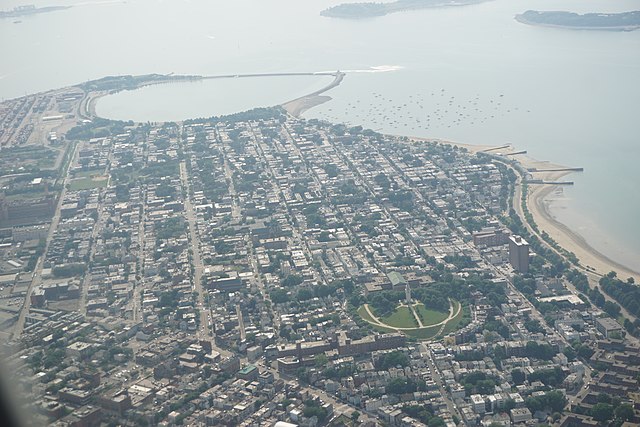South Boston is a densely populated neighborhood of Boston, Massachusetts, United States, located south and east of the Fort Point Channel and abutting Dorchester Bay. It has undergone several demographic transformations since being annexed to the city of Boston in 1804. The neighborhood, once primarily farmland, is popularly known by its twentieth century identity as a working class Irish Catholic community. Throughout the twenty-first century, the neighborhood has become increasingly popular with millennial professionals.
South Boston from the air in 2010
John Joseph Moakley United States Courthouse on Fan Pier
Mural in South Boston saying "Welcome to South Boston" in English and "Fáilte go mBoston dheas" in Irish. Also shown is a Celtic cross, the coats of arms of the Provinces of Ireland and the words "Sinn Féin" "Irish Republican Army" and "NORAID." This Mural has been torn down along with the building to make way for resident housing.
The peninsula of South Boston, featuring Castle Island and Dorchester Heights, as view from the air
Boston, officially the City of Boston, is the capital and most populous city in the Commonwealth of Massachusetts in the United States. The city serves as the cultural and financial center of the New England region of the Northeastern United States. It has an area of 48.4 sq mi (125 km2) and a population of 675,647 as of the 2020 census, making it the third-largest city in the Northeast after New York City and Philadelphia. The Greater Boston metropolitan statistical area, including and surrounding the city, is the largest in New England and eleventh-largest in the country.
Image: Boston panoramio (23)
Image: ISH WC Boston 4
Image: Boston Old State House (48718568688)
Image: Boston Massachusetts State House (48718911666)








